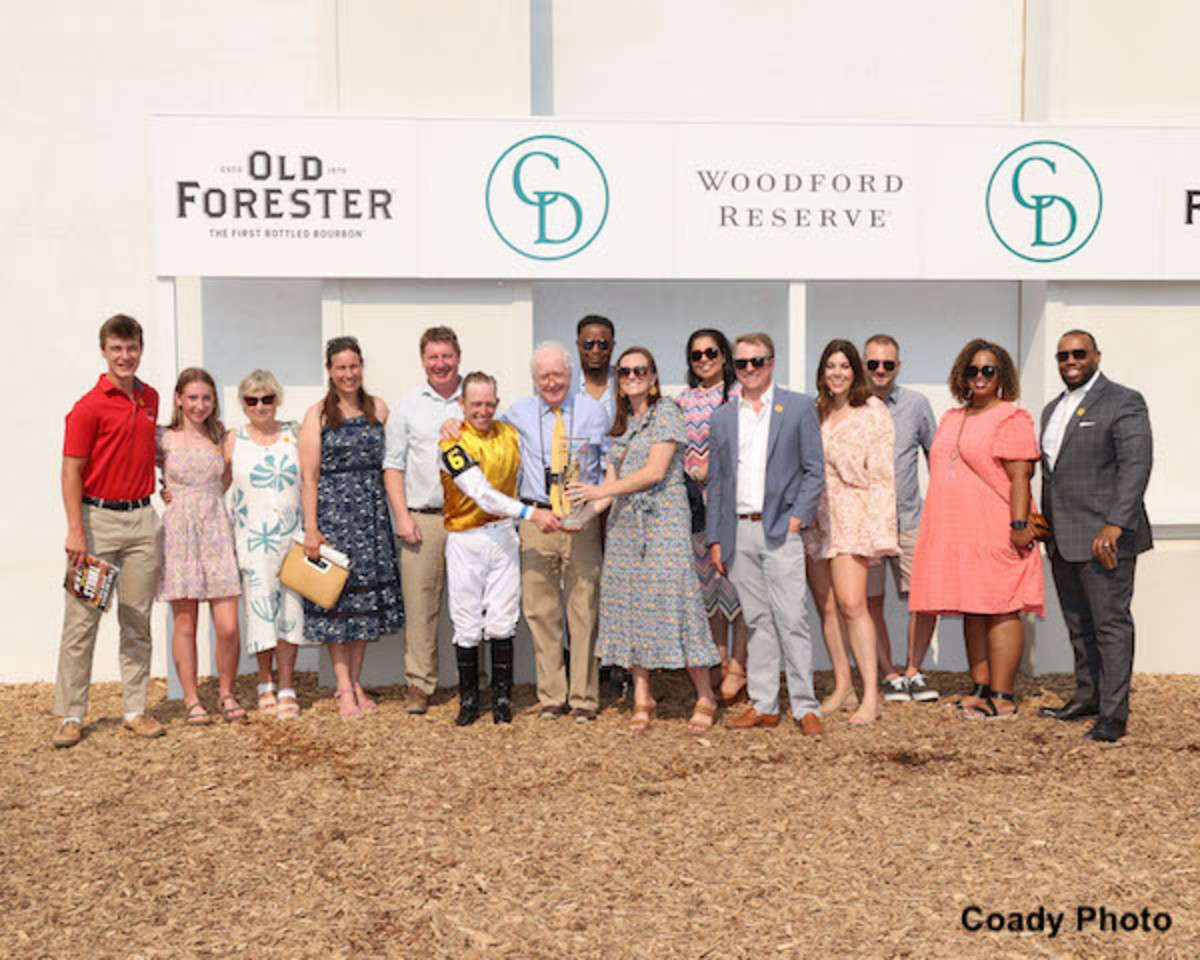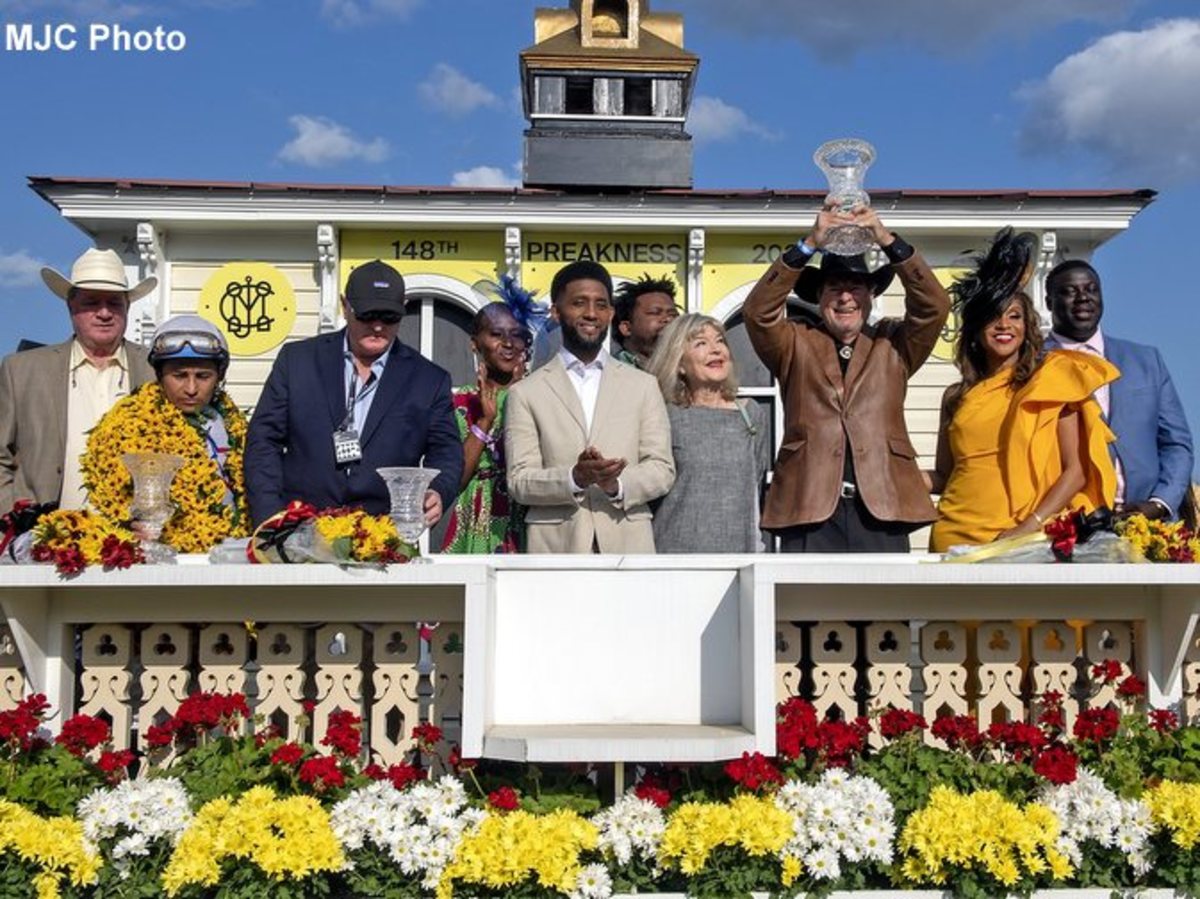In 2001, Geoff Mulcahy took out his trainer's license in the United States, having spent the past few years working in Ireland, South Africa, and Saudi Arabia for an array of trainers. A few years later he and his wife Sandra started their own breaking and pre-training business as well at their farm in Lexington, Ky.
Around the same time Michael and Liz Campbell purchased the historic Cambus-Kenneth farm from the Bluegrass Trust for Historic Preservation, eager for a change of pace from their lives in Massachusetts working in academia. They began a small Thoroughbred breeding program after their move. It would be another 16 years before they crossed paths with Mulcahy and began their partnership.
Mulcahy has now been in the business of breaking Thoroughbreds and getting them ready for the track for a little less than 20 years. While he currently has around 65 horses in his program at the Thoroughbred Center, the heart of his operation is a 5-year-old Lemon Drop Kid mare named Henrietta Topham. Owned by the Campbells, she is the lone horse that Mulcahy trains to race.
After 21 years of training mostly claiming and allowance level horses while also running his breaking business, Mulcahy decided that Henrietta Topham would be the last horse to run under his name. He goal is to shift his focus exclusively to working with young horses after one more racehorse of his own.
A little less than a year after breaking her maiden, Henrietta Topham gave Mulcahy his first graded stakes win in the Grade 3 Old Forester Mint Julep Stakes at Churchill Downs.
“I went hoarse,” Mulcahy said. “All I could say was 'Go on Henri, go on Henri.' I was roaring and shouting. It was great because coming off two weeks [since her last race] I was sort of second guessing myself. I basically left it up to Ricardo [Henrietta Topham's long time exercise rider]. I asked him after the final breeze before the race if she felt good and he said yes, so that made up my mind. We went into the race after the late scratches thinking we could definitely get graded stakes-placed, but then she went on and won and just what a day.”
It was also the first graded stakes win for the Campbells, who bred the mare as well as the prior two generations of her female line. Henrietta Topham is out of the Cozenne mare Miss Silver Brook, who raced 21 times over the span of four years, during which time she ran against the likes of Zenyatta and Stardom Bound. Henrietta Topham's female line eventually traces back to her third dam Secondfromthetop. Secondfromthetop was one of the first mares in the Campbells' broodmare band and had been left from the original owners of Cambus-Kenneth farm. She has produced the likes of G2 winner Why Change and stakes winner Jimmy Z, who were both sold as yearlings.
“Luck is the main ingredient, but you have to position yourself to take advantage of the luck,” said Michael Campbell. “My wife and I are very interested in pedigrees and breeding. We got right into analyzing pedigrees and calling on people who are experts on this. It's taken a long time. Most people aren't going to wait four generations, but there was so much talent that we knew about in these horses that had excuses for not showing up. We knew there was talent in that particular mare line.
“The keyword is patience. You really have to immerse yourself in the history and tradition of Thoroughbred breeding and learn the pedigrees, learn about the animal. I wish more people were horse people and they would really get to know the individual horses and how they behave and what they need. If they spent more time getting to know the horses that they own it would help them determine the next best step for that individual.
“You don't have to be fabulously wealthy, but you do have to be patient, which can be expensive.”

The Campbells' thought process, dedication, and patience seems to have paid off in the case of Henrietta Topham. The same can surely be said for Mulcahy.
Originally from Ireland, Mulcahy started spending his summers getting experience working with Thoroughbreds at the age of 13. Mulcahy had worked with yearlings, broodmares and foals, and 2-year-olds by the time he decided to make his way to the United States for the first time in 1995 to work for Garret O'Rourke at Juddmonte Farm in their breaking division. When he arrived, O'Rourke told Mulcahy that their yearlings wouldn't be ready to get started for another few months and he sent Mulcahy to work for Jimmy Corrigan, formerly of Pin Oak Stud, at the Thoroughbred Center starting their 2-year-olds.
Support our journalism
If you appreciate our work, you can support us by subscribing to our Patreon stream. Learn more.Six years later after completing his equine science degree in Ireland, working in South Africa, and working as an assistant for Niall O'Callaghan and Bob Baffert in the United States and Saudi Arabia, Mulcahy decided he was ready to settle down in Kentucky and go out on his own.
“I started out with one horse, then went up to two, then up to three, and just gradually went on from there,” Mulcahy recalled. “I remember having three horses in three different barns at one point. I remember having two feed tubs and having to wait for the first horse to finish eating so I could feed the third horse because I didn't have the money for the new feed tub. I just worked hard and made the contacts and built it up from there.”
Henrietta Topham is the icing on top of a two-decade training career that has often involved getting horses ready for other trainers to take over. As ever, Mulcahy has managed her with his trademark patience.
Following a productive 2022 that saw the mare break her maiden after four tries in 2021 and win her first stakes race, Henrietta Topham started out her 5-year-old campaign with a fifth place finish in an allowance race at Keeneland. Undeterred by the result, Mulcahy pointed her towards a start in the G3 Modesty Stakes at Churchill Downs on the Kentucky Oaks undercard. Fate, however, intervened when Henrietta Topham came up slightly unsound with a small cut on the bulb of her heel the day before the race so Mulchay rerouted her to an allowance race on May 21 at the same track. Henrietta Topham won the allowance race by a neck before going on to win the Mint Julep two weeks later.
It took a lot to get there – four generations of breeding for the Campbells, 22 years of training for Mulcahy, and four tries for Henri – but Henrietta Topham's team is convinced now more than ever that the wait for something great can be worthwhile.
The post Breeders’ Cup Presents Connections: Henrietta Topham Shows That Good Things Come To Those Who Wait appeared first on Horse Racing News | Paulick Report.



